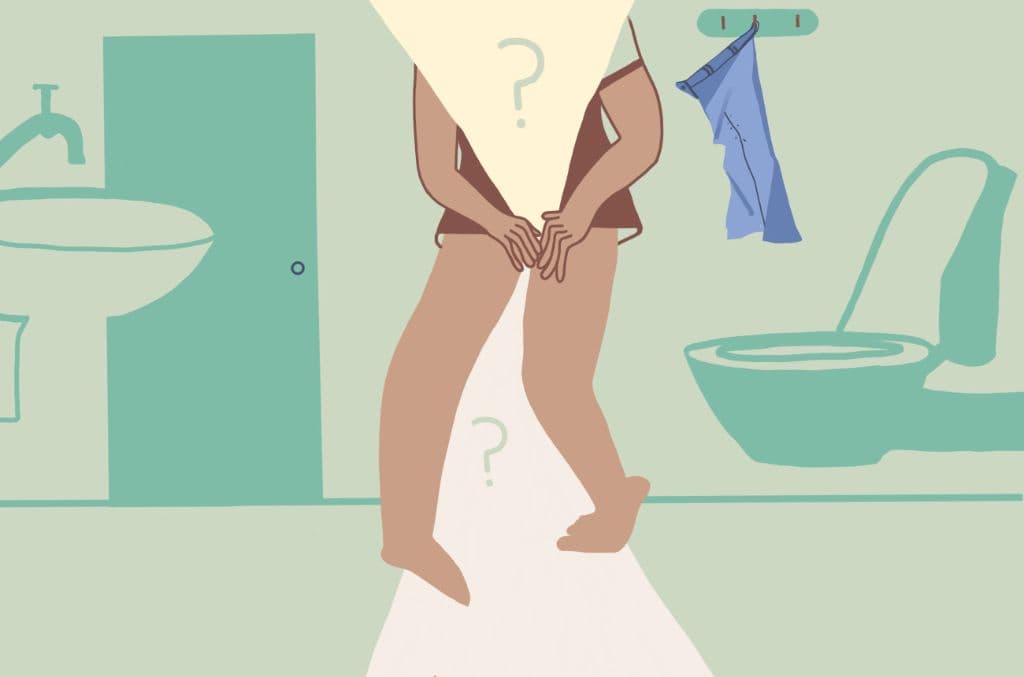Most of us realise or even suspect a yeast infection or a urinary tract infection only when we notice certain symptoms, so let’s start there!
Symptoms of Urinary Tract Infection (UTI)
UTI infection has the following symptoms:
- Pain and burning sensation when urinating
- Pain when urinating or having sex
- Itching in the affected area (such as your vagina and vulva)
- Awakening from sleep to go to the bathroom
In fewer cases, you may also experience the following –
- Discoloured or cloudy urine that may be red or pink from blood
- Foul-smelling urine
- Pain in the pelvis, especially if you’re a woman
- When the infection involves higher parts of your urinary system like your kidneys, you could have fever, chills, nausea, and vomiting
Generally, symptoms of an uncomplicated UTI, one that doesn’t spread to the kidneys, tend to go away after 1-2 days of starting antibiotic treatment. However, it may take several days to a couple of weeks to treat a complicated UTI.
Symptoms of Yeast Infection
Yeast infection has 2 common symptoms:
- Pain and itching of the genitals
- Thick curd-like discharge
When the yeast infection is mild, it clears up more quickly than a severe one. The duration of treatment for yeast infection can vary from just a few days to up to 6 months.

Causes and Risk Factors for UTI and Yeast Infections
UTIs can occur due to the presence of certain bacteria in urine, such as Escherichia coli, Klebsiella pneumonia, or Staphylococcus saprophyticus.
Risk factors for a UTI infection can include the following:
- Having unprotected frequent sex
- Using certain contraceptive methods, such as diaphragms or spermicide
- Wiping from back to front after a bowel movement
- Having kidney or bladder stones
- Not emptying the bladder fully or holding in your pee for very long
- Having a urinary catheter
The reason why women are more susceptible to a UTI infection is that the female urethra is much shorter in length allowing bacteria near the vagina to enter the bladder more easily.
Yeast Infections:
An overgrowth of Candida, a type of fungus that lives inside the body, can also cause a yeast infection. The usual areas where yeast infections can develop areas the follows-mouth, throat, gut, and the vagina.
Vaginal yeast infections are quite common. According to the Office on Women’s Health, about 75% of all females will have at least one yeast infection during their lifetime.
Risk factors for yeast infections include the following:
- Having a weakened immune system
- Taking antibiotics or having recently completed a course
- Being pregnant
- Having uncontrolled diabetes
- Using hormonal birth control that contains high doses of estrogen
- Using douches or vaginal sprays
- Wearing tight underwear and clothes that create a warm, moist environment
- During pregnancy
Pregnant women may have an increased risk of developing both types of infection. They should contact their gynaecologist immediately if they suspect that they may have a UTI or yeast infection. Untreated UTIs and yeast infections can harm the foetus and may result in complications during and after delivery.
Diagnosis of UTI and Yeast Infections
A doctor can diagnose a yeast infection by carrying out a physical examination of the affected area and a culture test if they are unsure of the diagnosis.
Usually, a physical examination is more than enough. The best indicator of a yeast infection is a thick curdy white discharge with plenty of itching. During a culture test, the physician will use a cotton swab to collect a sample from the affected area and send it to the laboratory for testing. The pathologists examine it to detect Candida fungus.
Want to prevent yeast infection?
- Wipe from front to back after going to the toilet
- Pee after vaginal sex
- Drink plenty of water so fluid is always moving through your system
- Maintain general hygiene
- Change tampons frequently
- Women with frequent UTI’s have also shown to benefit from using D-mannose and probiotic supplements to prevent UTIs.
Treating UTI’s:
It is best to start treatment for a urinary infection as soon as you notice symptoms. If UTIs are untreated they can complicate further. A simple UTI can usually be treated with antibiotics and additions to manage symptoms. Avoiding irritants such as alcohol and caffeine and sexual intercourse whilst being treated is a good idea.
If you aren’t responding to the usual antibiotic therapy, chances are that you have an unusual infection and may need a urine culture to see what antibiotic works for you.
It is important to complete your antibiotic therapy course even if your symptoms have abated.
Diagnosis of yeast infection:
A doctor can diagnose a yeast infection by carrying out a physical examination of the affected area and a culture test if they are unsure of the diagnosis.
Usually, a physical examination is more than enough. The best indicator of a yeast infection is a thick curdy white discharge with plenty of itching. During a culture test, the physician will use a cotton swab to collect a sample from the affected area and send it to the laboratory for testing. The pathologists examine it to detect Candida fungus.
Best ways to prevent a yeast infection:
- Maintain a clean and dry vagina
- Avoid vaginal douching, perfumes or sprays
- Include probiotics in your diet
- Make sure your choice of clothing is not responsible for infections
- If you have any of the risk factors mentioned above, contact your doctor and address them.
Treating Yeast :
Vaginal yeast infections can be treated with a vaginal pessary and cream or an oral medicine as well. The dosing depends on the kind of treatment or medicine your doctor has chosen for you. There is no better option between a tablet and a vaginal pessary, both work equally well. If you haven’t responded to a medication chances are that you could have a mixed vaginal infection or the antibiotic hasn’t worked for you.
Talk to your doctor about getting your partner evaluated and treated.
When to see a physician?
A trained medical professional can only diagnose and treat UTI and yeast infections. When the infection is left untreated, it can progress causing symptoms to become worse and leading to additional complications. E.g. an untreated UTI can lead to a severe kidney infection.
To know more on the sexual and reproductive health of women, visit https://www.proactiveforher.com/
Disclaimer: This information is educational and should not be construed as medical advice. Please consult your doctor before making any dietary changes or adding supplements.
Proactive For Her is a digital clinic for women, offering accessible, personalised, and confidential healthcare solutions. We offer out-patient care, diagnostic services and programs for various health concerns of Indian women, across their lifetime - from puberty to pregnancy to menopause.

